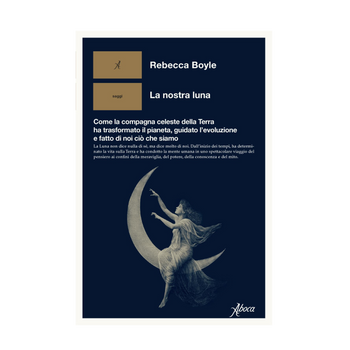You have no items in your shopping cart.
De historia stirpium De historia stirpium
Facsimile for professional use Facsimile for professional use
Leonhart Fuchs Leonhart Fuchs
€490,00
This scientific and artistic masterpiece was a fundamental source for XVIth century medicinal botany..
This scientific and artistic masterpiece was a fundamental source for XVIth century medicinal botany..
Availability:
In Stock
Sku: COFFUCHS
ISBN/EAN: 9788898881222
De historia stirpium is a work by Leonhart Fuchs, one of the fathers of Renaissance botany.
The herbal is an extraordinary scientific document and artistic masterpiece that has always been a source of fascination to enthusiasts of medicinal botany and art historians.
Aboca Edizioni published a facsimile reproduction of De historia stirpium; the reproduction is completed by a commentary that provides a thorough biography of the author, and a description of some of the technical and artistic aspects of the drawings and printing.
The work, written in Latin, comprises 928 pages and 517 watercolour woodcuts. The description of the 343 plants – placed in alphabetical order – was carried out with new scientific criteria, which specify nomenclature, morphology and typical place of growth and, in particular, their vires (curative virtues), a classification that makes reference to the works of Classical physicians and writers Galen and Hippocrates. For the first time the general appearance of the plants is favoured, showing the roots, stalk, leaves, flowers and fruits to ensure correct identification of plants found in nature. The superb watercolour woodcut plates enriching the work represent an important step forward in phytography; they are the fruit of the partnership between Fuchs and a number of artists whose portraits are included in the frontispiece of the work, next to that of the author.
An original specimen, printed in Basel in 1542, is carefully preserved in the Bibliotheca Antiqua at Aboca Museum in Sansepolcro.
- The slipcase contains the facsimile reproduction and the Commentary. The case is covered in brown cloth with dry hot gilding
- The facsimile reproduction consists of 928 pages, with 517 illustrations
- The cover is in artificial leather, with dry hot gilding
- The Commentary consists of 64 pages, with hardback cover in Imitlin cloth. It is written by Duilio Contin and Lucia Tomasi Tongiorgi
- The work belongs to the series "Aboca Museum Ancient Herbals", which includes De materia medica, I Discorsi di P.A. Mattioli, Hortus Eystettensis, Hortus amoenissimus, Kitâb al-Diryâq.
De historia stirpium is a work by Leonhart Fuchs, one of the fathers of Renaissance botany.
The herbal is an extraordinary scientific document and artistic masterpiece that has always been a source of fascination to enthusiasts of medicinal botany and art historians.
Aboca Edizioni published a facsimile reproduction of De historia stirpium; the reproduction is completed by a commentary that provides a thorough biography of the author, and a description of some of the technical and artistic aspects of the drawings and printing.
The work, written in Latin, comprises 928 pages and 517 watercolour woodcuts. The description of the 343 plants – placed in alphabetical order – was carried out with new scientific criteria, which specify nomenclature, morphology and typical place of growth and, in particular, their vires (curative virtues), a classification that makes reference to the works of Classical physicians and writers Galen and Hippocrates. For the first time the general appearance of the plants is favoured, showing the roots, stalk, leaves, flowers and fruits to ensure correct identification of plants found in nature. The superb watercolour woodcut plates enriching the work represent an important step forward in phytography; they are the fruit of the partnership between Fuchs and a number of artists whose portraits are included in the frontispiece of the work, next to that of the author.
An original specimen, printed in Basel in 1542, is carefully preserved in the Bibliotheca Antiqua at Aboca Museum in Sansepolcro.
- The slipcase contains the facsimile reproduction and the Commentary. The case is covered in brown cloth with dry hot gilding
- The facsimile reproduction consists of 928 pages, with 517 illustrations
- The cover is in artificial leather, with dry hot gilding
- The Commentary consists of 64 pages, with hardback cover in Imitlin cloth. It is written by Duilio Contin and Lucia Tomasi Tongiorgi
- The work belongs to the series "Aboca Museum Ancient Herbals", which includes De materia medica, I Discorsi di P.A. Mattioli, Hortus Eystettensis, Hortus amoenissimus, Kitâb al-Diryâq.
Release date: 2017
Dimensions: 23 x 35 cm
Copertina: Il piatto di copertina è rivestito in similpelle stampata in oro a caldo e impressioni a secco
Box: Rivestito in tela marrone, è rifinito con decori in oro a caldo
Facsimile pages: 928
Commentary pages: 64
Illustrations: 517
Release date: 2017
Dimensions: 23 x 35 cm
Copertina: Il piatto di copertina è rivestito in similpelle stampata in oro a caldo e impressioni a secco
Box: Rivestito in tela marrone, è rifinito con decori in oro a caldo
Facsimile pages: 928
Commentary pages: 64
Illustrations: 517






















